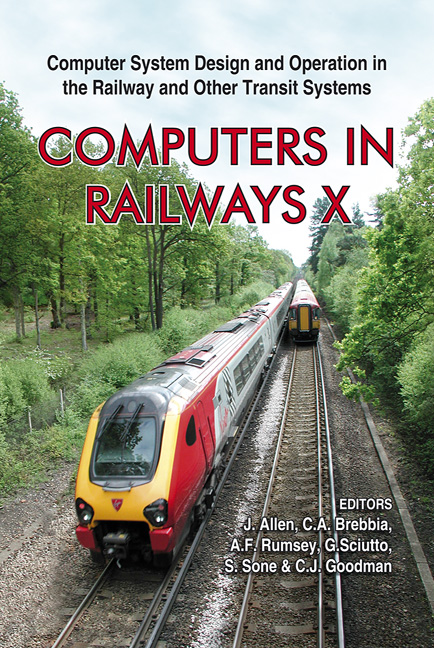Modeling A Distributed Railway Interlocking System With Object-oriented Petri Nets
Price
Free (open access)
Transaction
Volume
88
Pages
10
Published
2006
Size
457 kb
Paper DOI
10.2495/CR060311
Copyright
WIT Press
Author(s)
X. Hei, H. Mochizuki, S. Takahashi, H. Nakamura, M. Fukuda, K. Iwata & K. Sato
Abstract
Great progress of distributed technology and intelligent terminals makes it possible to develop a distributed railway interlocking system (DRIS). In this paper, a modelling method of DRIS is presented by using G-nets, which are Petri nets extended with object-oriented concepts. The modelling method improves maintenance and reusability remarkably. Based on the models, the DRIS can be implemented with an object-oriented language such as C++ or JAVA. Keywords: distributed technology, railway interlocking system, G-nets, Petri net. 1 Introduction Computerized interlocking system has been developed for many years [1]. Conventional interlocking system, which is named electronic interlocking system, is composed of central control computer, electrical control part and mechanical part. These systems feature that cost is high and updating of terminal devices is inconvenient. On the other hands, study and application of distributed control technology and field-control technology have become a new stage [2, 3]. Especially, with the development of ubiquitous technology [4], intelligent terminals or intelligent devices have been possible. All these progress make it possible developing distributed railway interlocking system (noted as DRIS). In distributed interlocking system, all devices are intelligent, and they communicate with each other directly without centralized interlocking computer, as shown in figure 1. All these intelligent devices have functionality units which are shown in figure 2. The logics of DRIS also become different from centralized interlocking system.
Keywords
distributed technology, railway interlocking system, G-nets, Petri net.





